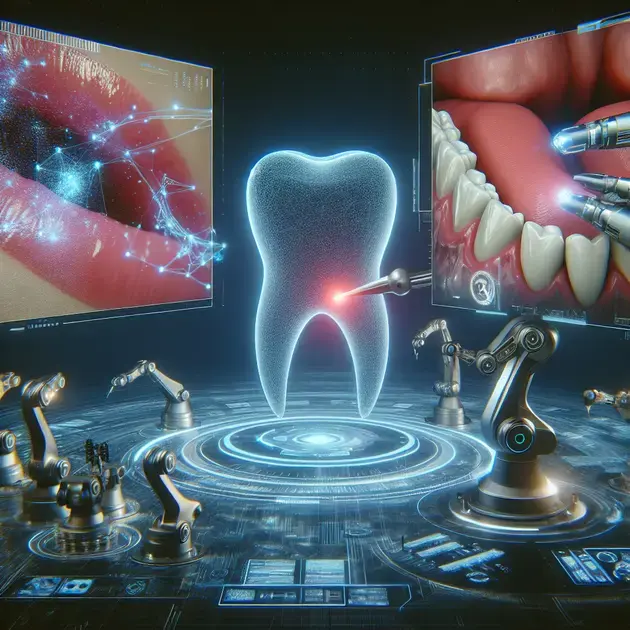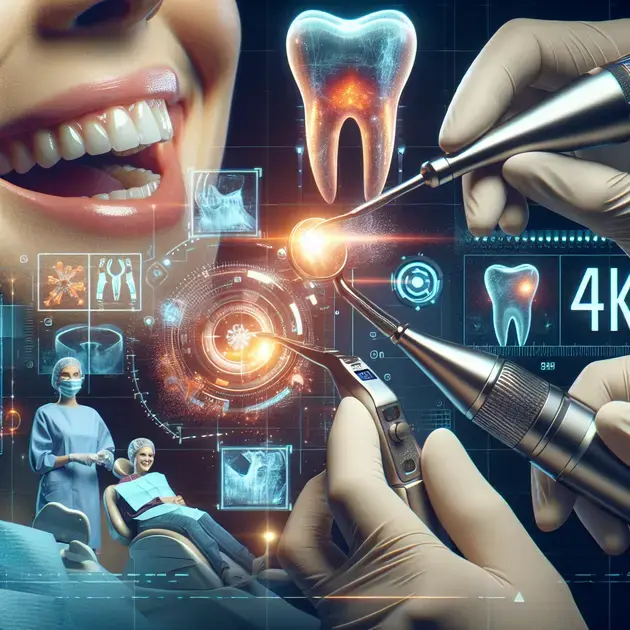If you or a loved one has been diagnosed with periodontitis, understanding the medication options available is crucial for effective treatment. Treating Periodontitis involves a combination of professional dental care and at-home oral hygiene practices. In recent years, new medications have been developed to target the root cause of periodontitis, leading to more successful outcomes for patients.
From antimicrobial mouth rinses to prescription antibiotics, there are various medication options to help combat the bacteria responsible for periodontitis. It is important to work closely with your dentist or periodontist to determine the most suitable medication for your specific condition. By gaining a better understanding of these medication choices, you can take control of your periodontal health and work towards achieving a healthier smile.

Understanding the Impact of Medication Choices
When it comes to your oral health, the medications you take can have a significant impact. Certain medications can cause dry mouth, which increases the risk of cavities and gum disease. To understand how your medication choices can affect your dental health, follow these steps:
Step 1: Consult with Your Healthcare Provider
Schedule a consultation with your healthcare provider to go over the medications you are currently taking. Make sure to mention all prescribed medications, over-the-counter drugs, and supplements. Your healthcare provider can provide insight into how each medication may impact your oral health.
Step 2: Research Potential Side Effects
Take the time to research the potential side effects of each medication on your dental health. Websites like Drugs.com or WebMD provide detailed information on side effects and interactions. Understanding these effects can help you proactively address any oral health issues.
Step 3: Communicate with Your Dentist
Inform your dentist about the medications you are taking during your next appointment. Your dentist can tailor your dental care routine to mitigate any negative effects of the medications. They may recommend additional preventive measures or changes in your oral hygiene practices.
Step 4: Monitor Your Oral Health
Keep a close eye on your oral health while taking medications. Look out for symptoms like dry mouth, inflammation, or changes in the condition of your teeth and gums. If you notice any issues, consult both your dentist and healthcare provider for guidance.
Step 5: Stay Informed and Updated
Stay informed about any changes in your medication regimen and how they may affect your oral health. Regularly communicate with your healthcare team to ensure that your dental care aligns with your overall health goals.
Exploring Different Types of Treatment
When it comes to dental treatment, there are various options available to address different oral health issues. To explore the different types of treatment and find the best option for your needs, consider the following steps:
Step 1: Schedule a Dental Consultation
Start by scheduling a consultation with your dental professional to discuss your oral health concerns. During this appointment, your dentist will evaluate your teeth and gums, identify any issues, and recommend appropriate treatment options.
Step 2: Research Treatment Options
Research different types of dental treatments available for your specific dental condition. Websites like Colgate.com or the American Dental Association provide detailed information on procedures such as fillings, crowns, implants, and more. Understanding these options can help you make an informed decision.
Step 3: Consider the Pros and Cons
Weigh the pros and cons of each treatment option based on factors like effectiveness, durability, cost, and recovery time. Consult with your dentist to discuss which treatments align with your oral health goals and considerations.
Step 4: Get a Second Opinion
If you are unsure about the recommended treatment or want additional input, seek a second opinion from another dental professional. A second opinion can provide clarity and ensure that you are choosing the best course of action for your oral health.
Step 5: Create a Treatment Plan
Work with your dentist to develop a personalized treatment plan that addresses your oral health needs and goals. This plan should outline the recommended treatments, timeline, and any necessary follow-up appointments to maintain your oral health.
Collaborating with Your Dental Professional
Collaborating with your dental professional is essential for maintaining good oral health and addressing any dental concerns effectively. Follow these steps to establish a collaborative relationship with your dentist:
Step 1: Open Communication
Establish open and transparent communication with your dental professional. Discuss any concerns, symptoms, or questions you may have regarding your oral health. Clear communication is key to receiving appropriate care.
Step 2: Regular Dental Check-ups
Schedule regular dental check-ups as recommended by your dentist. These appointments allow your dental professional to monitor your oral health, address any issues early on, and provide preventive care to avoid future problems.
Step 3: Follow Recommended Treatment Plans
Adhere to the treatment plans and oral hygiene recommendations provided by your dentist. Consistent follow-through with prescribed treatments and at-home care routines is crucial for maintaining optimal oral health.
Step 4: Ask Questions
Don’t hesitate to ask your dental professional questions about your treatment options, procedures, or oral health maintenance. A well-informed patient is better equipped to make decisions about their dental care.
Step 5: Provide Feedback
Share feedback with your dentist about your treatment experience, any improvements you would like to see, or any concerns you may have. Your input can help enhance the quality of care and strengthen your collaborative relationship with your dental professional.

Exploring Advanced Treatments for Gum Health
Gum health is a crucial aspect of overall oral health, as it plays a significant role in preventing various dental issues. When it comes to advanced treatments for gum health, it’s essential to consider the latest innovations and technologies that can help improve gum health effectively. One innovative treatment option that is gaining popularity is laser therapy. This minimally invasive procedure uses a laser to target and remove diseased gum tissue, promoting gum regeneration and reducing inflammation.
Another advanced treatment for gum health is platelet-rich plasma (PRP) therapy. This technique involves using the patient’s blood components to accelerate the healing process and promote tissue regeneration. By injecting PRP into the gums, patients can experience faster recovery times and improved overall gum health.
In addition to these treatments, advancements in periodontal surgery have also provided new options for treating gum disease. Procedures such as guided tissue regeneration and tissue engineering techniques offer personalized solutions for patients with severe gum issues. These innovative approaches aim to restore gum health and function while minimizing discomfort and recovery time.
Overall, exploring advanced treatments for gum health is essential for maintaining optimal oral health and preventing more serious dental issues in the future. By staying informed about the latest technologies and innovations in gum health treatment, patients can make informed decisions about their oral care and work towards achieving healthier gums.
Discovering the Role of Innovative Technologies
As technology continues to advance, the field of dentistry has benefitted greatly from innovative technologies that have revolutionized the way gum health is managed and treated. One key technology that has played a significant role in improving gum health is 3D imaging. This technology allows dentists to create detailed, accurate images of the gums and surrounding structures, enabling them to diagnose issues more effectively and plan targeted treatments.
Another innovative technology that is shaping the future of gum health care is robotic-assisted surgery. Robotic systems can assist dentists in performing precise and minimally invasive procedures, reducing the risk of complications and improving patient outcomes. By leveraging robotics in gum health care, dentists can provide more personalized and effective treatments for their patients.
In addition to imaging and robotic technologies, the use of artificial intelligence (AI) in gum health is also on the rise. AI-powered systems can analyze large amounts of data to identify patterns and trends in gum health, helping dentists tailor treatment plans to individual patient needs. By harnessing the power of AI, dentists can offer more personalized and efficient care to enhance gum health outcomes.
By discovering the role of these innovative technologies in gum health care, patients can benefit from more accurate diagnoses, personalized treatments, and improved overall oral health. Embracing technology in dentistry is key to advancing gum health care and ensuring patients receive the best possible outcomes.
Enhancing Periodontitis Care with Personalized Solutions
Periodontitis, a severe form of gum disease, requires personalized solutions to effectively manage and treat the condition. One innovative approach to enhancing periodontitis care is the use of probiotics. Probiotic supplements contain beneficial bacteria that can help restore the natural balance of the oral microbiome, reducing inflammation and promoting gum health.
Another personalized solution for periodontitis care is genetic testing. By analyzing a patient’s DNA, dentists can identify genetic markers that may predispose them to gum disease. This information allows for tailored treatment plans that address the underlying genetic factors contributing to periodontitis, improving treatment outcomes and long-term gum health.
Furthermore, personalized treatment plans that incorporate lifestyle modifications, such as smoking cessation programs and dietary adjustments, can make a significant impact on periodontitis care. By addressing lifestyle factors that contribute to gum disease, patients can achieve better overall oral health and prevent the progression of periodontitis.
Overall, enhancing periodontitis care with personalized solutions is crucial for effectively managing this complex condition. By incorporating innovative approaches such as probiotics, genetic testing, and lifestyle modifications, dentists can provide patients with comprehensive care that targets the root causes of periodontitis and promotes long-term gum health.
Conclusion
In conclusion, advanced treatments for gum health, such as laser therapy, platelet-rich plasma (PRP) therapy, and innovative periodontal surgeries, are crucial for maintaining optimal oral health and preventing serious dental issues. These treatments offer effective solutions for improving gum health, promoting tissue regeneration, and reducing inflammation, ultimately leading to healthier gums and overall well-being.
Furthermore, the role of innovative technologies, including 3D imaging, robotic-assisted surgery, and artificial intelligence (AI), is transforming the field of dentistry and enhancing gum health care. By leveraging these technologies, dentists can provide more accurate diagnoses, personalized treatment plans, and improved outcomes for patients, ensuring they receive the best possible care for their gum health.
Enhancing periodontitis care with personalized solutions like probiotics, genetic testing, and lifestyle modifications is essential for effectively managing this complex condition. These tailored approaches address the root causes of periodontitis, promote long-term gum health, and help patients achieve better overall oral health by targeting specific genetic predispositions and lifestyle factors contributing to gum disease.



